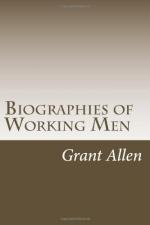In 1844 Gibson paid his first visit to England, a very different England indeed to the one he had left twenty-seven years earlier. His Liverpool friends, now thoroughly proud of their stone-cutter, insisted upon giving him a public banquet. Glasgow followed the same example; and the simple-minded sculptor, unaccustomed to such honours, hardly knew how to bear his blushes decorously upon him. During this visit, he received a command to execute a statue of the queen. Gibson was at first quite disconcerted at such an awful summons. “I don’t know how to behave to queens,” he said. “Treat her like a lady,” said a friend; and Gibson, following the advice, found it sufficiently answered all the necessities of the situation. But when he went to arrange with the Prince Consort about the statue, he was rather puzzled what he should do about measuring the face, which he always did for portrait sculpture with a pair of compasses. All these difficulties were at last smoothed over; and Gibson was also permitted to drape the queen’s statue in Greek costume, for in his artistic conscientiousness he absolutely refused to degrade sculpture by representing women in the fashionable gown of the day, or men in swallow-tail coats and high collars.
Another work which Gibson designed during this visit possesses for us a singular and exceptional interest. It was a statue of George Stephenson, to be erected at Liverpool. Thus, by a curious coincidence, the Liverpool stone-cutter was set to immortalize the features and figure of the Killingworth engine-man. Did those two great men, as they sat together in one room, sculptor and sitter, know one another’s early history and strange struggles, we wonder? Perhaps not; but if they did, it must surely have made a bond of union between them. At any rate, Gibson greatly admired Stephenson, just as he had admired the Stelvio road. “I will endeavour to give him a look capable of action and energy,” he said; “but he must be contemplative, grave, simple. He is a good subject. I wish to make him look like an Archimedes.”
If Gibson admired Stephenson, however, he did not wholly admire Stephenson’s railways. The England he had left was the England of mail-coaches. In Italy, he had learnt to travel by carriage, after the fashion of the country; but these new whizzing locomotives, with their time-tables, and their precision, and their inscrutable mysteries of shunts and junctions, were quite too much for his simple, childish, old-world habits. He had a knack of getting out too soon or too late, which often led him into great confusion. Once, when he wanted to go to Chichester, he found himself landed at Portsmouth, and only discovered his mistake when, on asking the way to the cathedral, he was told there was no cathedral in the town at all. Another story of how he tried to reach Wentworth, Lord Fitzwilliam’s place, is best told in his own words. “The train soon stopped at a small station, and, seeing some people get out,




